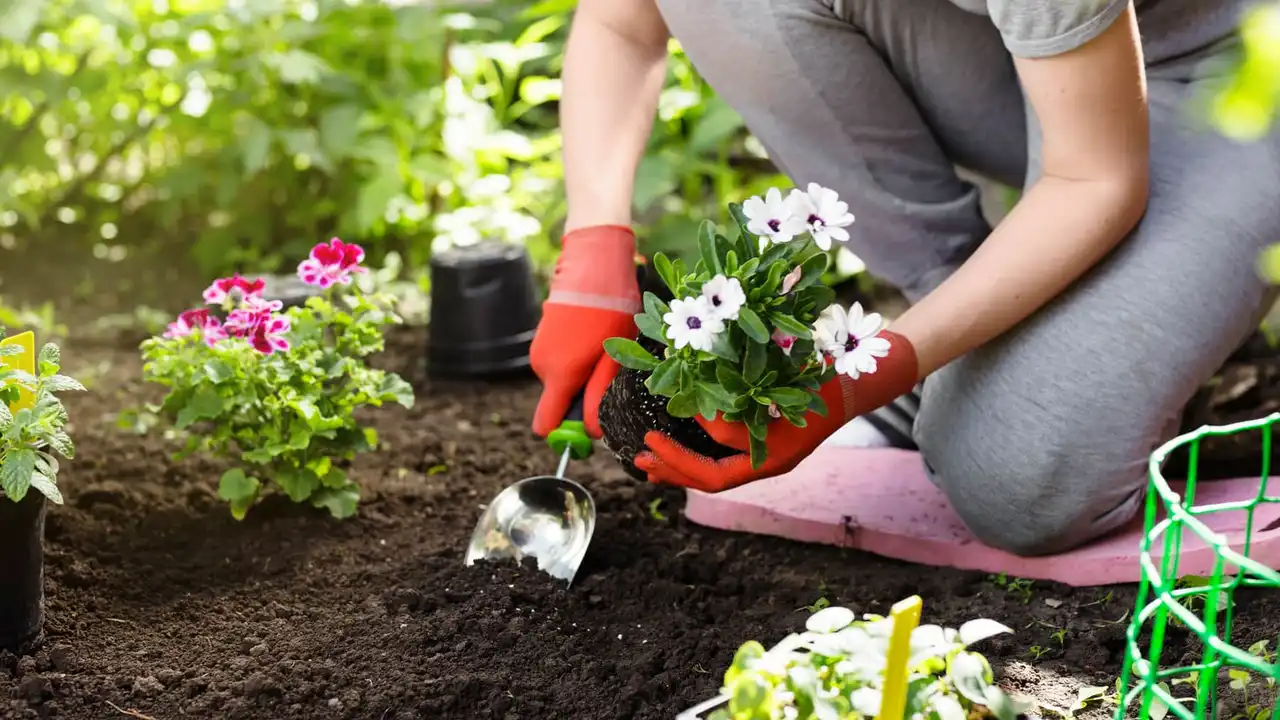Dealing with Ants in the Garden 5 Natural Ways
Explore the benefits of community gardening and learn how to get involved. Share the joy of growing with others.

Community Gardening Benefits and How to Join
What is Community Gardening and Why Should You Care?
Community gardening is more than just growing plants together; it's about cultivating connections, sharing knowledge, and building stronger, greener neighborhoods. Imagine a shared plot of land, often in an urban or suburban setting, where individuals or groups come together to grow food, flowers, or other plants. These gardens can take many forms: individual plots rented by members, communal plots where everyone works together, or a hybrid of both. The beauty of community gardening lies in its collaborative spirit and the diverse benefits it offers, not just to the gardeners themselves, but to the entire community. It's a fantastic way to get your hands dirty, learn new skills, and contribute to a more sustainable and vibrant local environment. Whether you're a seasoned gardener or a complete novice, there's a place for you in the world of community gardening.
The Myriad Benefits of Community Gardening for Individuals and Communities
The advantages of participating in a community garden are extensive and touch upon various aspects of life, from personal well-being to environmental sustainability. Let's break down some of the most significant benefits:
Health and Wellness Benefits of Community Gardens
Engaging in gardening is a fantastic form of physical activity. It involves digging, planting, weeding, and harvesting, all of which contribute to improved cardiovascular health, strength, and flexibility. Beyond the physical, community gardening offers significant mental health benefits. Spending time outdoors, connecting with nature, and engaging in a productive hobby can reduce stress, anxiety, and symptoms of depression. The sense of accomplishment from nurturing plants and harvesting your own food is incredibly rewarding. Furthermore, access to fresh, organically grown produce can lead to healthier eating habits, improving overall nutrition for participants and their families.
Social Connection and Community Building Through Shared Gardens
Perhaps one of the most profound benefits of community gardening is the social aspect. These gardens serve as natural gathering places, fostering interactions among people from diverse backgrounds, ages, and cultures. They break down social barriers and create a sense of belonging. Members share tips, celebrate successes, and even commiserate over challenges, building strong bonds and friendships. This shared experience strengthens community ties, leading to more cohesive and supportive neighborhoods. It's a place where you can meet new people, learn from experienced gardeners, and even teach others what you know.
Environmental Impact and Sustainability of Community Gardens
Community gardens contribute significantly to environmental sustainability. They transform unused or neglected urban spaces into green oases, improving air quality and reducing the urban heat island effect. By growing food locally, they reduce the carbon footprint associated with transporting produce long distances. Many community gardens practice organic methods, avoiding harmful pesticides and promoting biodiversity. They also encourage composting and water conservation, teaching valuable sustainable practices to participants. These green spaces provide habitats for pollinators like bees and butterflies, contributing to local ecosystems.
Economic Advantages and Food Security from Community Gardens
For many, community gardening offers a tangible economic benefit by reducing grocery bills. Growing your own fruits, vegetables, and herbs can significantly cut down on food expenses, especially for fresh produce. This is particularly impactful for low-income families, contributing to food security. Beyond personal savings, some community gardens donate surplus produce to local food banks or sell it at farmers' markets, generating income for the garden and providing fresh, healthy food to the wider community. It's a practical way to stretch your budget while enjoying high-quality food.
Educational Opportunities and Skill Development in Community Gardening
Community gardens are living classrooms. They provide hands-on learning experiences in horticulture, sustainable agriculture, and environmental stewardship. Beginners can learn from experienced gardeners about soil preparation, planting techniques, pest management, and harvesting. Workshops and educational events are often organized, covering topics from composting to seed saving. This knowledge empowers individuals to grow their own food, fostering self-sufficiency and a deeper understanding of where food comes from. It's a continuous learning journey, regardless of your prior experience.
How to Find and Join a Community Garden Near You
Ready to get involved? Finding a community garden might be easier than you think. Here's a step-by-step guide to help you locate and join a garden in your area:
Online Resources for Locating Community Gardens
The internet is your best friend when searching for community gardens. Start with a simple Google search for 'community gardens near me' or 'community gardens [your city/state]'. Many cities and towns have dedicated websites or directories listing local gardens. Organizations like the American Community Gardening Association (ACGA) offer resources and a garden locator tool on their website. Websites like LocalHarvest.org also list community gardens alongside farms and farmers' markets. Don't forget to check social media groups and local online forums, as many gardens have their own pages or groups where they post updates and recruitment information.
Local Government and Non-Profit Organizations for Garden Information
Your local government, particularly the parks and recreation department or urban planning office, often has information about community gardens. They might manage public garden spaces or have a list of privately run gardens in the area. Non-profit organizations focused on urban agriculture, environmental sustainability, or food justice are also excellent resources. These groups often initiate and support community garden projects and can connect you with existing opportunities. Libraries and community centers are also good places to inquire, as they often have bulletin boards or staff who are knowledgeable about local initiatives.
Visiting and Inquiring at Existing Community Gardens
Once you've identified a few potential gardens, the best way to learn more is to visit them in person. Most community gardens have open access during daylight hours, allowing you to walk around and observe. Look for bulletin boards or signs that might have contact information or details about joining. If you see gardeners working, don't hesitate to politely introduce yourself and ask about the garden. They are usually passionate about their work and happy to share information. This direct interaction can give you a real feel for the garden's atmosphere and whether it's a good fit for you.
Understanding Membership Requirements and Responsibilities in Community Gardens
Before committing, it's crucial to understand the specific requirements and responsibilities of joining a particular community garden. These can vary widely. Common requirements include:
- Membership Fees: Many gardens charge an annual fee to cover costs like water, tools, and maintenance. Fees can range from $20 to $100 or more, depending on the garden's resources and plot size.
- Work Hours: Some gardens require a certain number of volunteer hours per month or season for communal tasks like weeding pathways, maintaining shared tools, or organizing events.
- Plot Maintenance: You'll be responsible for maintaining your individual plot, including planting, watering, weeding, and harvesting.
- Rules and Regulations: Gardens typically have rules regarding organic practices, pest control, water usage, and general conduct to ensure a harmonious environment for all members.
Ask about the application process, waiting lists (some popular gardens have them), and any orientation sessions for new members. Understanding these details upfront will help you choose the right garden and ensure a positive experience.
Essential Tools and Products for Your Community Garden Plot
While many community gardens provide some shared tools, having your own basic set of gardening equipment will make your experience much more enjoyable and efficient. Here are some essential tools and products, along with specific recommendations and comparisons:
Hand Tools for Precision and Comfort in Community Gardens
For close-up work, a good set of hand tools is indispensable. They are perfect for weeding, planting small seedlings, and working in tight spaces.
-
Hand Trowel: Essential for digging small holes for planting, transplanting, and scooping soil.
- Recommended Product: Fiskars Ergo Trowel
- Features: Ergonomic handle reduces wrist strain, durable cast-aluminum head resists rust.
- Use Case: Planting herbs, small flowers, or vegetable seedlings.
- Price: Around $10-$15.
- Comparison: Cheaper plastic trowels exist but often break. Stainless steel options are more durable but heavier.
-
Hand Cultivator/Fork: Great for loosening soil, aerating, and removing weeds.
- Recommended Product: Wilcox All-Pro 101S Cultivator
- Features: Made from high-quality stainless steel, sharp tines, comfortable grip.
- Use Case: Breaking up compacted soil, mixing in compost, weeding around established plants.
- Price: Around $25-$35.
- Comparison: Less expensive options might have weaker tines that bend easily. This one is built to last.
-
Weeding Tool: A specialized tool can make weeding much easier.
- Recommended Product: CobraHead Weeder and Cultivator
- Features: Unique 'cobra head' design for precise weeding and cultivating, durable steel blade.
- Use Case: Removing stubborn tap-rooted weeds like dandelions, working in tight rows.
- Price: Around $30-$40.
- Comparison: More versatile than a standard weeding fork, but a bit pricier.
Larger Tools for Soil Preparation and General Maintenance in Community Gardens
For preparing beds, turning soil, and larger tasks, you'll need some bigger tools. While some gardens have shared ones, having your own ensures availability and hygiene.
-
Garden Fork: Ideal for turning soil, aerating, and breaking up clumps.
- Recommended Product: Spear & Jackson Traditional Digging Fork
- Features: Strong carbon steel head, hardwood handle, good balance.
- Use Case: Loosening compacted soil, mixing in amendments, harvesting root vegetables.
- Price: Around $50-$70.
- Comparison: Look for solid construction; cheaper forks can bend or break tines.
-
Shovel/Spade: For digging, moving soil, and creating beds.
- Recommended Product: Bully Tools 92712 Round Point Shovel
- Features: 14-gauge steel blade, fiberglass handle, made in the USA.
- Use Case: Digging new garden beds, moving compost or soil, general excavation.
- Price: Around $40-$60.
- Comparison: Round point is versatile; square point is better for scooping loose material.
-
Garden Hoe: Excellent for weeding large areas and preparing seedbeds.
- Recommended Product: True Temper Garden Hoe
- Features: Durable steel blade, hardwood handle, good for chopping and scraping.
- Use Case: Removing shallow weeds, creating furrows for planting seeds.
- Price: Around $25-$40.
- Comparison: Different types of hoes exist (e.g., stirrup hoe for push-pull weeding), but a traditional garden hoe is a good all-rounder.
Watering Equipment for Efficient Hydration in Community Gardens
Access to water is crucial. While community gardens usually have shared spigots, having your own watering can or hose attachment is convenient.
-
Watering Can: For precise watering of seedlings and small plants.
- Recommended Product: Haws Indoor Watering Can (or larger outdoor version)
- Features: Fine rose for gentle watering, balanced design, durable construction.
- Use Case: Watering newly planted seeds, delicate seedlings, or container plants.
- Price: Around $30-$60 (depending on size).
- Comparison: Cheaper plastic cans exist, but Haws offers superior balance and a gentle pour.
-
Adjustable Nozzle for Hose: If the garden has shared hoses, a good nozzle is key.
- Recommended Product: Gilmour Heavy Duty Watering Nozzle
- Features: Multiple spray patterns (mist, shower, jet), durable metal construction.
- Use Case: Watering established plants, cleaning tools, general garden tasks.
- Price: Around $15-$25.
- Comparison: Avoid cheap plastic nozzles that break easily. Look for metal construction for longevity.
Protective Gear for Safe and Comfortable Community Gardening
Protecting yourself while gardening is just as important as protecting your plants.
-
Gardening Gloves: Protect your hands from thorns, dirt, and blisters.
- Recommended Product: Atlas Nitrile Touch Gloves
- Features: Lightweight, breathable, excellent dexterity, good grip.
- Use Case: General gardening tasks, planting, weeding.
- Price: Around $5-$10 per pair.
- Comparison: Leather gloves offer more protection for heavy-duty tasks, but nitrile gloves are great for everyday use and maintain tactile feel.
-
Kneeling Pad/Kneelers: Save your knees from hard ground.
- Recommended Product: GardenHOME Garden Kneeler and Seat
- Features: Dual-purpose (kneeler and seat), sturdy metal frame, comfortable foam pad.
- Use Case: Weeding, planting, or any task requiring prolonged kneeling.
- Price: Around $30-$50.
- Comparison: Simple foam pads are cheaper but less versatile.
Storage and Transport Solutions for Your Community Garden Tools
Keeping your tools organized and easily transportable is essential, especially if you're sharing a garden space.
-
Garden Tote Bag/Bucket Organizer: For carrying hand tools, seeds, and small items.
- Recommended Product: Fiskars Garden Bucket Caddy
- Features: Fits around a standard 5-gallon bucket, multiple pockets for tools, durable fabric.
- Use Case: Keeping all your small tools in one place, easy to carry to and from your plot.
- Price: Around $15-$25 (bucket not included).
- Comparison: A simple canvas tote works, but an organizer keeps things tidier.
-
Folding Wagon/Cart: If your plot is far from the entrance or you bring many supplies.
- Recommended Product: Mac Sports Collapsible Folding Outdoor Utility Wagon
- Features: Folds compactly, heavy-duty frame, large capacity.
- Use Case: Transporting bags of soil, compost, harvested produce, or multiple tools.
- Price: Around $70-$100.
- Comparison: Cheaper options might have smaller wheels or less durable fabric. Consider capacity and maneuverability.
Tips for Success in Your Community Garden Journey
Joining a community garden is a rewarding experience, but a few tips can help ensure your success and enjoyment:
Start Small and Learn as You Grow in Your Community Garden Plot
Don't try to plant everything at once, especially if you're new to gardening. Start with a few easy-to-grow vegetables or flowers that you enjoy. This allows you to learn the ropes without feeling overwhelmed. As you gain experience and confidence, you can gradually expand your planting. Observe what other gardeners are growing successfully in the same environment and ask them for advice.
Communicate and Collaborate with Fellow Community Gardeners
Community gardening thrives on communication. Introduce yourself to your plot neighbors and other gardeners. Share your experiences, ask questions, and offer help when you can. Many gardens have a shared bulletin board, email list, or social media group for announcements and discussions. Being an active and friendly participant will enhance your experience and contribute to a positive garden atmosphere.
Respect Garden Rules and Shared Resources in Community Spaces
Every community garden has a set of rules designed to ensure fairness, safety, and productivity for everyone. Familiarize yourself with these rules, especially regarding water usage, organic practices, pest control, and plot maintenance. Be mindful of shared tools and resources; clean them after use and return them to their designated spots. Respecting boundaries and shared spaces is key to a harmonious gardening environment.
Be Prepared for Challenges and Embrace Learning in Your Garden
Gardening, whether in a community setting or your backyard, comes with its challenges. Pests, diseases, unexpected weather, or a crop failure can be disheartening. Don't get discouraged! View these as learning opportunities. Talk to experienced gardeners, research solutions, and adapt your strategies. The beauty of a community garden is that you're not alone in facing these issues; there's a whole network of people who can offer advice and support.
Enjoy the Process and the Harvest from Your Community Garden
Ultimately, community gardening should be an enjoyable and fulfilling experience. Take time to appreciate the beauty of the garden, the satisfaction of nurturing plants, and the joy of harvesting your own food. Celebrate your successes, no matter how small, and savor the fresh flavors of your homegrown produce. The connections you make and the skills you acquire will enrich your life far beyond the garden gate.
:max_bytes(150000):strip_icc()/277019-baked-pork-chops-with-cream-of-mushroom-soup-DDMFS-beauty-4x3-BG-7505-5762b731cf30447d9cbbbbbf387beafa.jpg)





